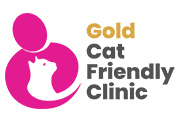Lungworm in Dogs
In 2014 we reported our first confirmed case of lungworm in a dog in Swindon.
We have seen 2 further lungworm cases within the last month. Although it is not an epidemic, it is clear that these parasites exist in our region so we must be alert.
The disease can lead to severe lung disease but also clotting disorders that can cause life-threatening haemorrhage. Although Harvey is not a slug or snail eater he does drink from puddles and the pond and could have inadvertently ingested a slug or snail.
Lungworm facts
- The worm is known as Angiostrongylus vasorum
- It develops in tissues of slugs and snails and when ingested by dogs enters the blood stream
- It then matures in the blood vessels of the lungs where it lays eggs
- The eggs are trapped in the small blood vessels (capillaries of the lungs) causing inflammation and the larvae emerge to be coughed up, swallowed and excreted in the dog’s faeces
- Slugs and snails become infected when in contact with the faeces and the cycle begins again
Contact the surgery if you are concerned about lungworm in your dog or cat. Details of Lungworm and Suitable worm tablets and Spot On products can keep your pet protected.
Lungworm Confirmed in a Swindon Dog (2014)
Harvey a 7 year old bouncy Cocker Spaniel came to Eastcott with a nasty cough. He was bright but the cough was worsening. His owner had seen TV adverts about lungworm and was concerned. X-rays showed some changes in the lungs so, under anaesthetic, a bronchoscope (flexible camera) was passed down Harvey’s windpipe. There was inflammation and mucus (yuk!). A fluid was flushed into the lung so samples could be collected. Whilst we awaited the results Harvey was prescribed antibiotics.
Results soon arrived and Harvey was indeed suffering from lungworm as larvae were identified in the fluid taken from his lungs.
Although hardly an epidemic it is clear that these parasites exist in our region so we must be alert. The disease can lead to severe lung disease but also clotting disorders that can cause life-threatening haemorrhage. Although Harvey is not a slug or snail eater he does drink from puddles and the pond and could have inadvertently ingested a slug or snail.
Lungworm facts
- The worm is known as Angiostrongylus vasorum
- It develops in tissues of slugs and snails and when ingested by dogs enters the blood stream
- It then matures in the blood vessels of the lungs where it lays eggs
- The eggs are trapped in the small blood vessels (capillaries of the lungs) causing inflammation and the larvae emerge to be coughed up, swallowed and excreted in the dog’s faeces
- Slugs and snails become infected when in contact with the faeces and the cycle begins again
Contact the surgery If you are concerned about lungworm in your dog or cat. Suitable worm tablets and Spot On products can keep your pet protected.





